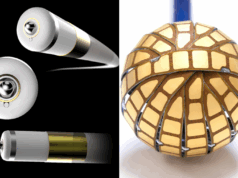St. Jude Medical obtained on 6 September 2011 approval of the industry’s first quadripolar pacing system for cardiac resynchronisation therapy defibrillators (CRT-Ds) in India. The Promote Quadra CRT-D offers physicians the ability to address pacing complications without the need to surgically reposition a lead.
The quadripolar technology integrates multiple pacing configurations and features that enable physicians to optimise the system at implant and throughout the life of the patient, as well as better manage common complications without having to expose the patient to additional surgeries.
The Quartet left ventricular pacing lead is used as part of the quadripolar pacing system. It is the first lead to feature four electrodes that enable up to 10 pacing configurations. Multiple pacing configurations allow the physician more options including pacing closer to the base of the left ventricle, which recent studies associate with better patient outcomes and which may be less possible with leads that have only two electrodes. The quadripolar pacing electrodes also provide physicians additional benefits, such as pacing around scar tissue in the heart and avoiding the most common pacing complications.
Common pacing complications that can occur in patients implanted with a CRT system include high pacing thresholds and unintentional phrenic nerve or diaphragmatic stimulation. Patients with high pacing thresholds require significantly higher energy to pace the heart; this may reduce the device’s battery life or cause pacing to fail. Phrenic nerve and diaphragmatic stimulation occur when the electrical output from a device inadvertently activates the diaphragm muscle (either directly or via the phrenic nerve), causing hiccups upon each pacing stimulus. Both high pacing thresholds and phrenic nerve or diaphragmatic stimulation are often due to the location of the pacing lead electrode.
“High pacing thresholds and phrenic nerve capture have been major problems with left ventricular leads. This new quadripolar left ventricular lead offers different pacing vectors and helps us to choose a vector which is devoid of Phrenic nerve capture. Altering pacing polarity may offer a lower pacing threshold, which is likely to improve the battery longevity,” said Calumbur Narsimhan, director of Arrhythmia-Electrophysiology Services at CARE Hospital in Hyderabad, India.
The Promote Quadra CRT-D and Quartet pacing lead have both received European CE mark approval.









